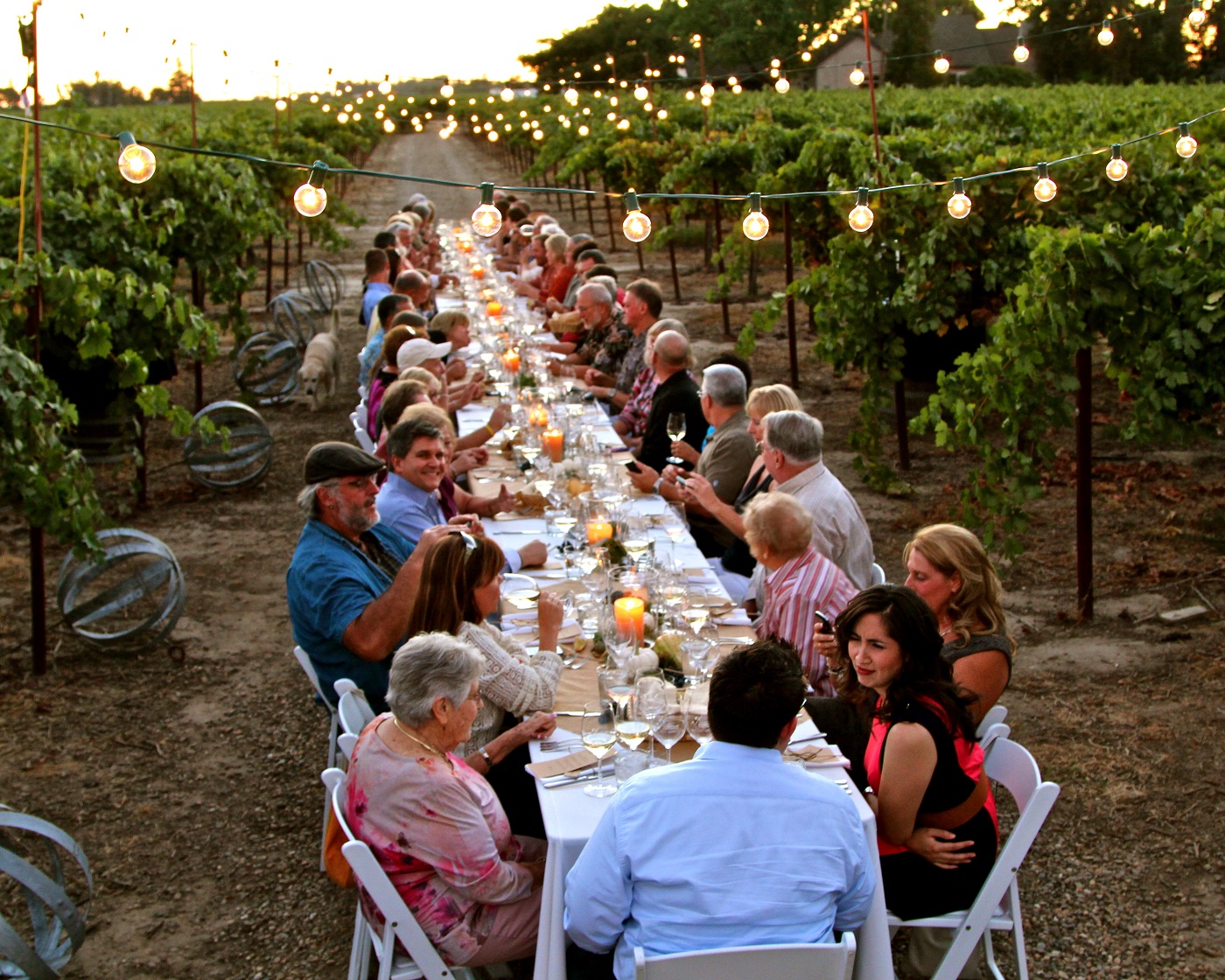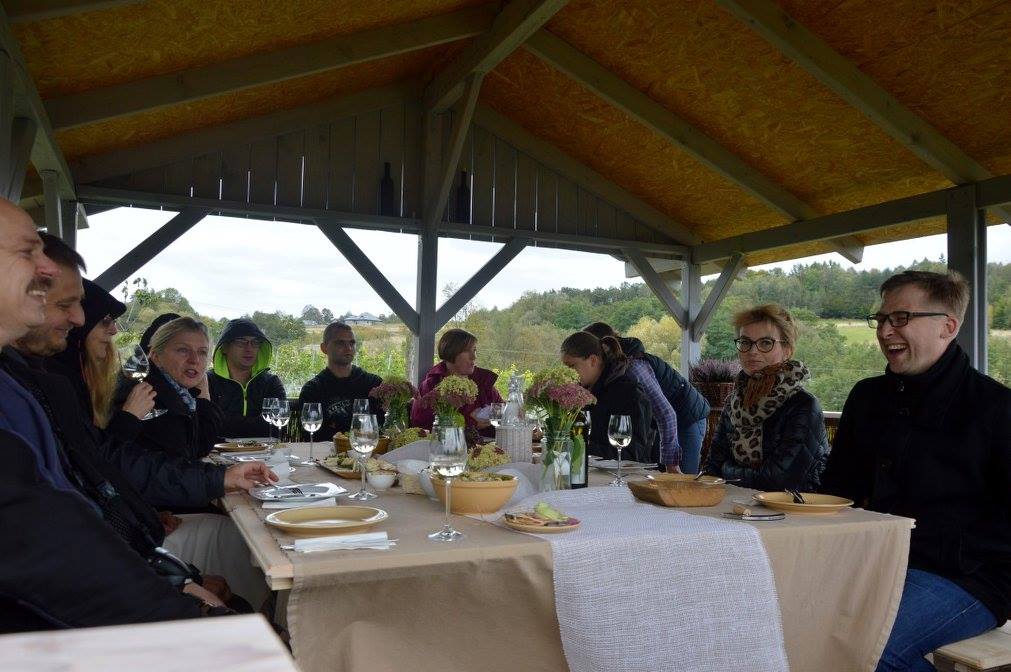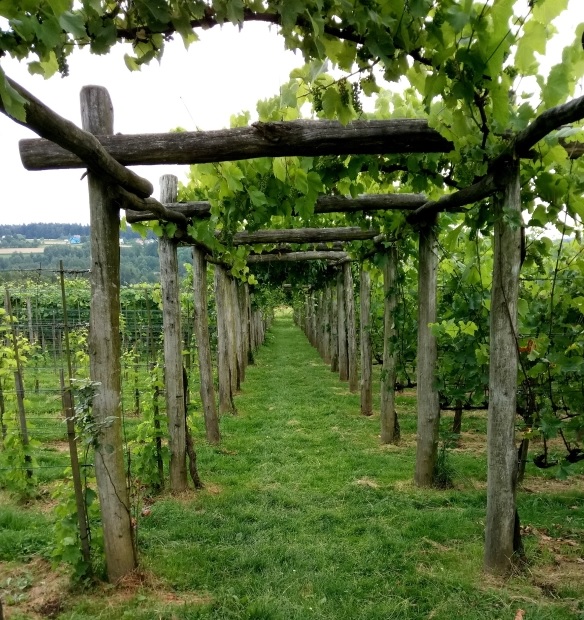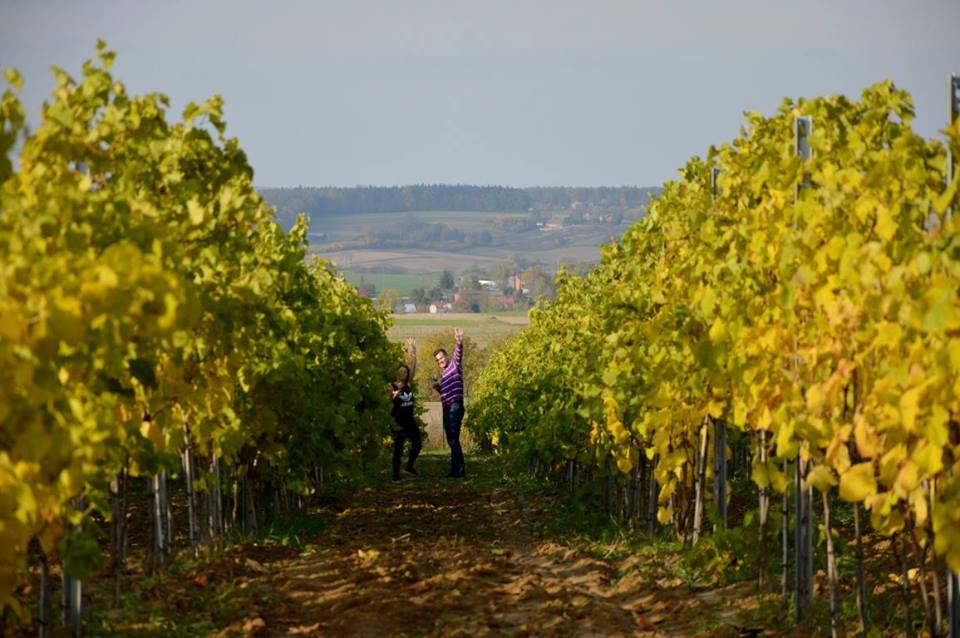

Few years ago winery in Poland used to be a fun for some crazy, passionate people. It’s not any more. In many large and small, professional vineyards great wines are produced. Winemakers simply outdo the way they make their guests.
Development of polish winery is most dynamic in history of our country.

Polish winery has more and more sympathizers although it reborned thirty years ago and its dynamic development has occurred in the last decade.
The exact number of Polish vineyards is unknown. there certainly is hundreds of them. There are over 300 in our database, and these are just the ones that has online information. From a few, hobbyist crops to professional, large-scale investments - from the sea, almost to the foothills of the Carpathians year by year more and more vineyards are created. Polish winegrowing is extremely dynamic, and although almost everything is learned from the beginning, because wine traditions in Poland have practically ceased to exist, and the renaissance of vines began to grow in the 1980s, Polish wines have enjoyed a growing recognition.
In 2017 there was 200 wine producers registered in Poland and the total vineyard area was 328 ha. However, the actual number of vineyards are not officially recorded - some claim that the above data should be multiplied by at least four to produce a near-real result.
One thing is certain: in Poland we can find many extraordinary places waiting for eno-exploration, delicious wines and plenty of wine attractions.
The history of Polish winery did not begin in 1982, when Roman Myśliwiec - one of the main precursors of the rebirth of vine cultivation in our country, planted the first bushes in his vineyard in Jasło. Wine traditions in Poland are very long.
Wladyslaw Szafer, a well-known Polish botanist, found fossil vine seeds in the Wieliczka salt mine, which means that Vitis vinifera L. was present in Poland already in the Miocene (22 million - 5 million years ago) long before the man...
Wine was already known to the first Piasts. It became more important after Christianity. The church needed wine for liturgical purposes. Transporting it from the south of Europe was quite troublesome. The vineyards were started in the Polish lands. Benedictines and Cistercians are considered as precursors of winery in Poland. Vine seeds were found among others in fossil settlements in Ostrów Lednicki - considered the cradle of the Polish State.
The first data about work in the vineyard date back to the 12th century - they were preserved on the border of the doors in Cathedral of Gniezno. In the twelfth century the vines were planted in many places, which is clearly demonstrated by names like: Winiary, Winnice, Winogrady, Winne Góry and other places with names referring to vine and wine. Historical data, however, speak only of several locations:
- In 1166, Prince Henry Sandomierski gave the vineyard to the Joannite Order, which brought to Zagość (wineries were assisted by three specialists - winemakers)
- In 1150 started the winery history of Zielona Góra - settlers from Flanders arrived there (the first documented mention of the vineyards in Zielona Góra dates back to 1314)
- There are also records about vineyards near Cracow, in the first half of the 12th century, and archaeological sources confirm the presence of vines on the Wawel Hill between 9th and 10th century.
We also know that in 1203 in the village of Marcinowo, there was a winegrower/winemaker who worked for the monastery vineyard Cistercian Order from Trzebnica.
The significant development of Polish winery took place in the fourteenth century,
When wine was made not only because of the liturgical needs. Vineyards were established or leased by the townspeople. Wine has become a profitable commercial asset. Winery centers were concentrated in the vicinity of Zielona Góra, Cracow, Sandomierz, Płock, Toruń, Poznan, Przemysl, Krosno and Lviv.
The good times of Polish wine-making did not last long.
Importing goods has become much easier and cheaper. The fashion of Western European products has quickly come. In the seventeenth century began the so-called “a small ice age” - the weather conditions have deteriorated so much that their negative impact on the vine has become significant. Wines began to be imported from Hungary, Italy, France and Germany. Gradual regression of wine growing and wine production began in Poland.
Then it was only worse. In the middle of the nineteenth century there was a plague of phylloxera - an inconspicuous insect that caused true vine blight in all parts of Europe. The wines and vineyards that survived had to face many political and economic problems. After World War I attempts were made to rebuild Polish winemaking (several hundred acres of vineyards, mainly in Western Wielkopolska and in the vicinity of Warka nad Pilica), but the next war and then political changes led to the disappearance of vines all over the country. Only the remnants of the wine tradition survived.
In the 80s of the twentieth century, Polish winegrowing was born again.
In Podkarpacie, the vineyard Golesz began experiments with hybrid grapes, more resistant to frosts and diseases. It gave good results and quickly spread throughout the region, and then in other parts of Poland. New vineyards were created also in the vicinity of Zielona Góra with rich and not so distant wine history (there were several vineyards there in the 1960s). On this area especially Vitis vinifera is planted.
Today
It is estimated that there are more than 150 vineyards in Podkarpackie, not much less in Małopolskie. The largest cooperative vineyard in Poland has an area of 35 hectares, two another bigest ones - 28 hectares. In other parts of Poland, winegrowing is equally dynamic, and the geographical distribution of the crop and the specificity of the wines even allow to point several wine regions.

Even ancient Greeks and Romans were visiting regions with vineyards, where the wine had been made. History of wine is almost as long as the history of mankind. Over the years we have been becoming more and more willing to combine pleasant of spending leisure time with wine in vineyard. This is how enoturism or wine tourism was born.
About enoturism
Enoturism (from Greek “oinos” - wine) is every form of tourist activity caused or associated with a wine factor; visiting vineyards and wine regions, visiting wineries, participating in wine-related events - festivities, feasts, outgoing tastings. Everything pleasant and related to wine. Eno- journeys always involve being in touch with nature and spending time away from the noise of big cities and troubles of everyday life. We have a chance to touch the nature. The most important thing in ecotourism is people. Winemakers are interesting and unique persons. Meeting with them is always a unique experience.
Wine tourism can be pure plasure (although some do not consider this to be sufficient form) or involve educational elements. It's a nice time and if we want we could learn something about wine, winemaking, vine growing and any other “wine” things. Wine is a very regional product, often accompanied with delicious food made from natural products form the same region.
Wine tourism is one of the best developing branches of tourism, gaining more and more supporters, and enjoys great interest – also in Poland. Our vintages have been reborn relatively recently. Together with vineyards grows up the enoturist potential and offer. There are many places in Poland just like best-known wine regions of southern and western Europe. Most wine lovers, who tried the enoturist pleasures, return to this way of spending free time. Is there something more pleasant than drinking wine in the shadow of the vine with nice company ?!
Some history
Traveling to the wine-producing regions has been known to mankind for a long time, enoturism have been known since the mid-twentieth century, when significant social changes have taken place - the middle class has become more numerous and wealthier and transport has become easier because of rail.
The first educational wine paths (Weinlehrpfad - Weinstrasse) appeared in Germany in the 1920s. Fifty years later, all the wine regions of the Federal Republic of Germany had their enoturistic routes - several hundred thousand tourists had visited it every year.
In France, the history of wine tourism started in 1950, in la Reine Pedauque; the economic problems of some Beaune producer forced him to “open” his cellar. Then he organized his first enotour of the region. The interest of tourists in this region does not diminish to the present day.
Other European countries, especially those with long wine traditions, have also begun to gradually explore the benefits of enoturism. In the 70s wine tourism began to develop in Australia. The importance of visitors in wine-growing regions has also been recognized in the New World. In the United States and Canada, and in Northern Europe, like the United Kingdom and the Netherlands, wine-related tourism has been a major determinant of winemaking. After the systemic transformation, enoturism began to develop in the countries of the post-communist countries such as the Czech Republic, Hungary, Romania and Moldova - since the mid-1990s. Poland seems to be one of the last European countries where wine tourism is beginning to develop. This is due to the specific history of wine-making in our country - the vineyard renaissance came little more than thirty years ago. The intensive development of professional winegrowing began in the last decade. The dynamics of development of the enoturistic offer is almost as astonishing as development of vineyards and wineries. Today we have nothing to be ashamed of, and in a few years we will as eno – attractive as any other European country.
An example of the development of enoturism is New Zealand. Its wine history is relatively short but nearly a quarter of the country's wine production is sold directly to tourists in vineyards.

Enotourism in Poland
Polish vintages are quite unique - after a relatively recent revival is has very intensive development. Both small family vineyards and medium and large (as for our conditions) professional undertakings are common.
Most wine lovers in Poland (here it must be remembered that in comparison with most European countries it is a very small group) know very little about polish vineyards, and their enoturist offer. This does not mean that the vineyards are few and do not have much to offer.
Polish winemakers do not complain about the lack of guests or interest in their wines. They do not have to focus aspecifically on advertising. Finding an organized trip is very difficult - the enoturist offer of travel agencies is very poor. Few broker-operators offer their services at fairly high rates. It is not an easy task to organize a trip to a vineyard if you do not have a well-rounded trail of information available on the internet. Here we hope our portal will be helpful.

It is a pity that the knowledge of Polish winegrowing is so poorly spread.
In Poland we have:
- wine trails and regions in which the concentration of vineyards and other attractions is so large - you can spend a lot of time there and do many interesting things
- dozens of small, family-owned wine farms offering; wine tasting, visiting vineyards, meals, accommodation and various other attractions
- vineyards offering full tourist offer, with professional catering and hotel facilities
- resorts that have not only the entire hotel and restaurant base, but offer facilities for large events; trainings, conferences, fairs, exhibitions and more
- relaxation suites with wellness and spa offer (also with cosmetics made of vines)
- education and training centers
- and many others…
Polish Enotourist Portal is a platform connecting Polish wine lovers; Both consumers and producers, who are most likely to meet each other through enotourism. Published on our portal we create contents over divisions, from love to Polish wine.
For all sympathizers of Polish winery and enotourism, we have created a place where we collected information about vineyards and other wineattractions in our country. We also present events and all enotouristic curiosities. We want our portal to be a meeting place - a platform that connects all those who are interested in our native wine with Polish winemakers and wine-connected people - so you can find everything or at least almost everything about enoturism in Poland. We hope the portal will grow and change in response to the needs of its users. We look forward to your opinions, comments and suggestions ... Let's create together the Polish Enotouristic Portal, so that it can best serve all interested in enotourists and winery in Poland.
There are currently over 300 vineyards in our database. Information about them we hope to gradually detail, so that in one place everyone can find everything he would like to know.
We have six described enoturistic routes. We have distinguished eight wine regions using mainly geographical and geostatistical criteria, but also taking into account the specific features of habitats, vineyards and wines produced in different parts of Poland. On the portal you will also find the current calendar for wine tourists, with all events related to Polish wine and vineyards.
We are very hopeful that the Polish Enoturist Portal will become a universal platform linking all those interested in wine tourism and that its users will together actively contribute to the development of Polish enoturism.
There are so many vineyards to see, so many wines to taste.

